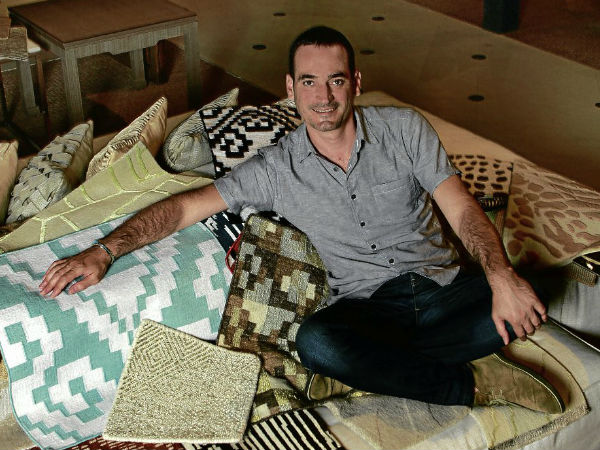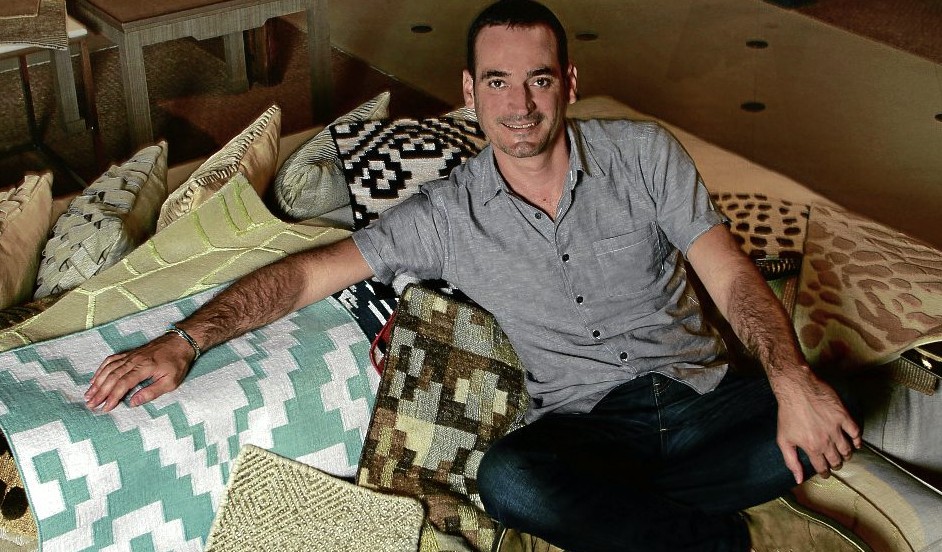
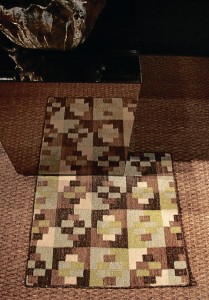
At the recent New York International Contemporary Furniture Fair (ICFF), visitors to the Iñigo Elizalde Rugs booth kept guessing the provenance of the designs and the owner.
The rug patterns were abstractions from an aerial map of Roxas Boulevard and downtown Manila. They also came from woven geometry typical of that of the upland tribes and close-ups of spotted stingray skin and conus shells sighted on a surf camp north of Surigao del Norte.
Westerners thought the patterns were Mexican. They were surprised to learn that the designs were references to the Philippines, the artist’s birthplace.
“I’m an undercover Pinoy,” Elizalde, a Spanish-Filipino, told us.
The New York-based designer launched his capsule collection for W17 home store and is looking for more sources of material and inspiration for his carpets in the Philippines.
Iñigo Elizalde Rugs is known for unusual designs which Elizalde based on photographs of nature and textures culled from the designer’s travels. Woven from natural fibers, such as undyed wool, silk, banana and bamboo, they’re also known for high-quality craftsmanship done by weavers in the Philippines, Nepal and India. The metallic part is made from recycled lurex.
As a custom house, Iñigo Elizalde Rugs can do anything for the client even if the design comes from a Pantone color chip or a tie.
From Africa to Beijing
For W17, Elizalde’s earlier works were visual records of his sojourns around the world.
Traveling around South Africa, he picked up the swells in the waters of Camps Bay and interpreted their curvilinear patterns on a silver and blue, jute and wool rug.
On a safari, he photographed the stripes of zebras at the Aquila reserve in Capetown and used them for his experiment on undyed wool and bamboo fiber.
The rippling patterns from the waterfalls of the Water Cube in Beijing are the theme of a rug named Bosse.
The grill design of the Bird’s Nest at the Beijing Olympic Stadium is one of the bestsellers.
Defiant of conventions, Elizalde produces his version of a plain rug with micro stripes made of alternating lines of wool and bamboo.
“We don’t use single colors,” he said. “We refuse to! We like pattern and fun. You can see the knots are done manually in Kathmandu. There are 100 knots per square inch.”
While googling for suppliers, he discovered the GoodWeave Org, which introduced him to mills in Nepal. This partnership fulfilled his philanthropic ideal.
“The foundation ensures there is no child labor involved,” he explained. “As a member, you pay an annual fee based on a percentage of sales. Every time the customer buys a carpet, a percentage of that goes to setting up schools in Kathmandu, ensuring no kids are abused to work in the mills. The rugs come with a stamp and a serial number.”
With his designs receiving favorable press, Elizalde got a call from an Indian manufacturer. His newest collection consists of dhurries, flat-woven rugs from India. Their names are derived from famous jeepney stops in Manila.

At the ICFF, visitors were surprised at the bold colors and designs. “People were used to our subdued designs,” he said. “They were calm, light and airy. At some point, I decided to make a 180-degree turn and just explode with color, pattern and geometry. No one else had so much color in the fair.”
“I had to explain about the jeepneys,” he added. “The Philippines suffers from negative press internationally. We’re trying to promote incredible design work.”
Elizalde said he had shopped at Tesoro’s handicrafts store and bought doilies, which he scanned and photographed. The result is Tesoro Multi, a collage of shapes and bold colors, a quirky homage to the Philippine handicrafts store.
Despite the economic meltdown and the low morale in America, Elizalde’s battle cry in the trade fair was, “Check it out.”
“We’re from the Philippines and all made abroad. Lighten up! We’re going to be fine and you can afford it,” he told the buyers and shoppers.
The micro-striped dhurries start at $30 per square foot, while the finer ones are $60 per square foot.
Bullied
Throughout the interview, Elizalde is exuberant, sometimes, concealing the profundity of his character under a cloak of jocularity.
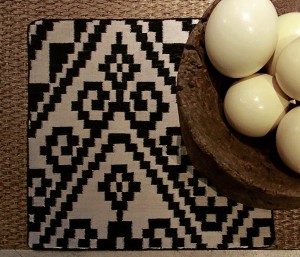
He said it took him a while to arrive at his present career.
The youngest of four brothers, he was the artist in the family. When his older brothers bullied him, he would retreat to his room and find solace in drawing.
Following family tradition, Elizalde went to boarding school in Portsmouth Abbey, Rhode Island, where a professor encouraged him to study classical painting techniques.
Flunking trigonometry, he almost didn’t graduate. His saving grace was taking up studio art classes and art history instead of math.
Upon his acceptance at the prestigious Rhode Island School of Design (RISD), his family asked if art was what he wanted to pursue in life. His parents were into agriculture while his brothers were entrepreneurs.
“I said it’s what I love,” he said. “I had really wanted to be a doctor. When I was in high school, we had to dissect frogs. I fainted. I did horribly in biology. But the artist is like a doctor. You heal people; you make them happy and you make them think. It’s therapeutic for the artist and for the viewer.”
His major was painting. RISD opened his eyes to a culture of highly motivated and creative individuals. Although 60 percent of the freshmen barely survive the first year, Elizalde thrived under pressure.
After RISD, he came to Manila but found no opportunities to be an artist or designer. With former RISD schoolmate Carlos Celdran, he formed a performance company, Walang Pamagat (Untitled).
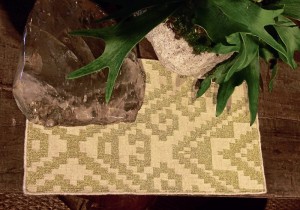
“It was our version of the 1950s-60s American abstract painting tradition of calling everything Untitled 1, 2, 3,” he said. “Our first performance was in the Music Museum where we shaved our heads onstage and choreographed our kind of Pandora’s Box. Only our parents were in the crowd and they were freaking out.”
Prolific career
Upon the prodding of his father, Elizalde returned to New York to hone his craft.
He took odd jobs in galleries, produced videos and did archives. He found stability as a lighting designer and technical director for The Kitchen, an experimental theater headed by Philip Glass, Laurie Anderson and Robert Wilson.
Although the work was satisfying, he got burned out since he did all aspects of the production.
He returned to Manila to start a graphic design business and offer creative consultancy for Sony and record companies.
After a few years, Elizalde missed the fine arts and enrolled in a screen printing course at the Fashion Institute of Technology in New York. Meanwhile, he took up a job offer as art director from bag designer Rafe Totengco.
“Rafe was surprised,” Elizalde said. “He thought this guy from a well-to-do family was going to be sosyal. I worked for Rafe for six years, starting as a graphic design slave to brand manager and doing everything, from organizing the shoots, building sets with my own hands and doing product shots. I’m certainly not lazy.”
Elizalde then got a call from a former RISD schoolmate who asked him to design the graphics and apparel for Anthropologie.
The workload finally wore him down. Elizalde mulled his options. He decided to take a leap of faith by starting his own business.
“I had six years with Rafe in New York which was monumental education on how to start and run a business,” he said. “I was involved in sales, advertising, marketing, IT, branding and website. Rafe still remains my mentor.”
In 2009, he accepted an offer from Evelyn Lim Forbes, general manager of Tai Ping Luxury Custom Carpet Co., to produce a capsule collection. He has since been one of Tai Ping’s creative directors, producing a sample every year.
Tough year
Back in New York, Elizalde started his rug business working out of his apartment. With a suitcase full of samples from Tai Ping and a smile, he knocked on doors of design firms, carpet and furniture showrooms. He was turned down.
“You either get discouraged or continue to go on your own,” he explained. “It was the most difficult thing I had ever attempted. I almost threw in the towel. I thought I’d just go back to Manila and work for my dad. But something kept me going.
“I felt good about the designs. They were different. It took a while for people to get it. These original designs were taken from my photography of nature, water and trees. I would send them to mills to reinterpret photography but they were ‘weirded out.’”
Fashion designer Lorena Calma advised him to join a trade show to introduce himself to the industry. He bravely put up a booth at the ICFF in 2010, with samples made by Tai Ping.
During the show, Elizalde sighted a stylish woman with a Vogue badge. He charmed her and ended up getting coverage in Vogue and Vogue.com.
The coverage finally opened doors even during recession.
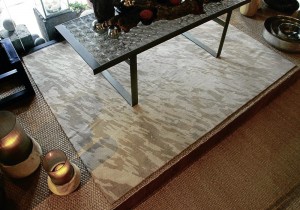
“The first year was tough,” he said. “People weren’t ordering anything. We persistently called up clients, I just can’t be a designer. I have to balance my books. I’m the accountant.”
Through diligence, he built a client base with prominent architects and designers. He also got a contract with Starwood Hotels. He then found a bigger office space and hired a studio manager and graphic designer.
This September, he will undertake a project for a satellite exhibit with Meson et Object, sponsored by Louis Vuitton and Baccarat. Elizalde is also working with Cebuano manufacturers for the Manila FAME show in October.
While some friends are having their midlife crises, Elizalde believes in the adage that life begins at 40. “I’m quite liberated—smarter and more experienced. And, I know what I’m doing.”
To order custom handmade carpet, contact [email protected] or call 4781717. The W17 showroom is at Warehouse 17B, La Fuerza Compound, 2241 Don Chino Roces Ave., Makati.

